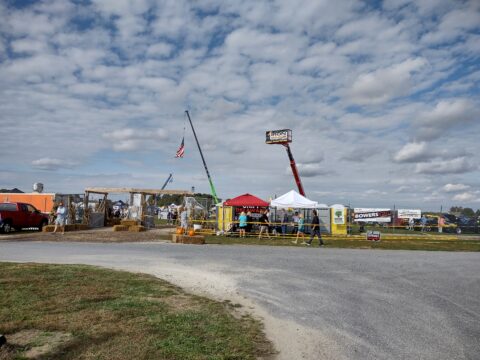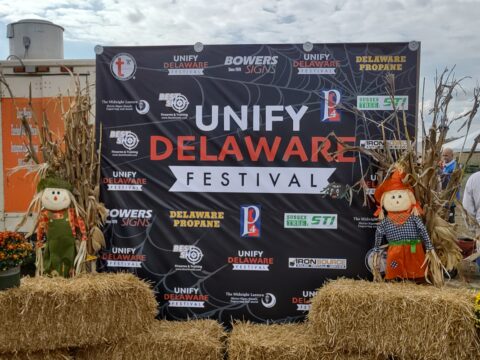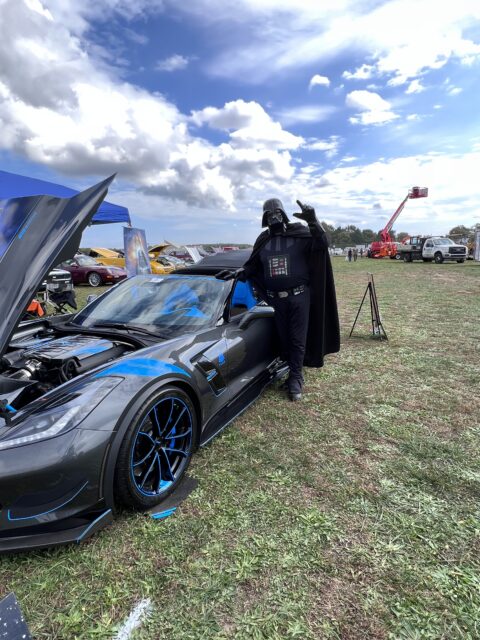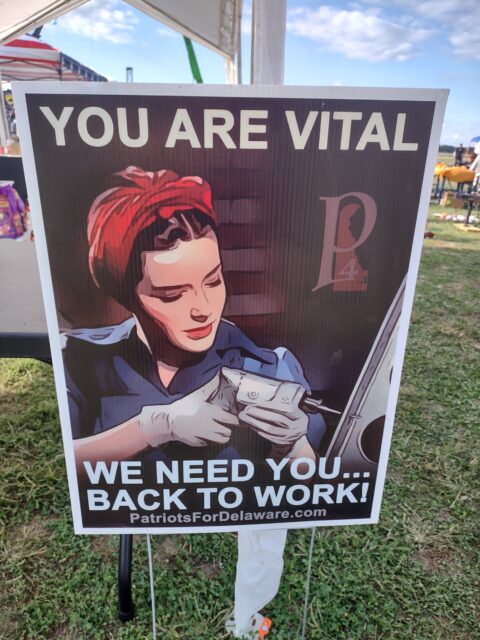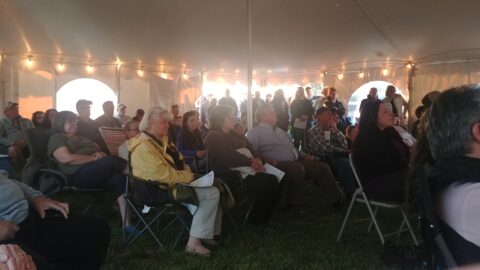The other day I saw a photo of the scariest Halloween decoration out there: a white wooden cutout of “2020.” And in this year of the pandemic, we have had quite the state election campaign, haven’t we? Six Republicans running for governor, a spirited primary race for both sides in the Senate, and the inclusion of principled independent bids up and down the ballot have made this a rather unique balloting, particularly compared to previous Delaware elections I covered on a peripheral basis. It’s probably the most controversial run in a decade, since the O’Donnell vs. Castle U.S. Senate primary on the Republican side – a contest from which the rending of the state GOP still shows.
In this race, I have been a free agent of sorts: when I moved to Delaware I decided to call the Constitution Party my home because I’m more in tune with their political philosophy and, frankly, don’t have a lot of use for the Delaware Republican Party based on how they run their affairs and the candidates they support. Alas, the CP doesn’t have the numbers to have a ballot position nor do they have viable candidates running in the state. Thus, I had no primary vote, and the Republican voters of Delaware selected two of the three I would have preferred. (Feel free to cue up Meat Loaf if you desire.)
Besides my local races, which are walkovers because no one but the Republican bothered to file, I have five statewide races to consider: U.S. Senator, U.S. House, Governor, Lieutenant Governor, and Insurance Commissioner. I think I will handle them in the reverse order.
To be honest, I don’t know a whole lot about the Insurance Commissioner duties or candidates, except for the fact I thought it unusual that a county sheriff would pivot into the position, as happened in 2016. Trinidad Navarro indeed made that transition, obviously helped by the familiarity to New Castle County voters and the D column he was placed in. (Before becoming a police officer, he was an insurance agent for a time – but considering the length of time he was a LEO, this insurance experience must have been rather brief.) Navarro’s biggest claim to fame since taking office was spearheading the drive to enshrine Obamacare into state law, which means we are stuck with these unaffordable provisions.
Meanwhile, Dr. Julia Pillsbury comes from a different perspective – that of a pediatrician. As a business owner, she’s the one who has to deal with the insurance companies and wrestle with them as an advocate for those in her care. Just from looking from the outside, I believe that rather than having the fox watch the henhouse with a former insurance agent, perhaps it’s time to try a new approach and see if it works. I’m urging a vote for Dr. Julia Pillsbury.
Why do I get the feeling that incumbent Bethany Hall-Long is simply biding her time and waiting her turn as Lieutenant Governor? While the list of lieutenant governors who eventually grabbed the brass ring is still relatively short in Delaware, it includes two of the most recent previous three occupants of the office including the current governor. Anymore that seems like the Delaware Way and that’s not the way we should go, particularly as she’s apparently been a willing accomplice to Governor John Carney’s tyrannical ways.
I think Donyale Hall will be an active player who is also bringing in the perspective of an outsider – unlike her opponent, who spent 15 years in the Delaware General Assembly as her way of working up the political ladder. What do we have to show for the last twenty years she’s been in office? Donyale is placing her emphasis on education, economic advancement, and a streamlined budget – issues that appeal to hardworking Delaware families and not those who simply want their back scratched in return for bestowing the trappings of power. The better choice for Lieutenant Governor is Donyale Hall.
When the current governor John Carney ran for his latest office, he used a carefully cultivated reputation as a business-friendly moderate Democrat to finally win the office he thought he would grab back in 2008, when he lost a bitterly-contested primary to Jack Markell and could not succeed in doing what his “boss” Ruth Ann Minner did – advance directly to the Governor’s chair from being Lieutenant Governor. Instead, he cooled his heels in Congress after Mike Castle bolted for an ill-fated Senate run two years later.
Yet that belief Carney was business-friendly has evaporated in the midst of a pandemic that has claimed as of Friday 680 lives in Delaware – a number that would rank as the 56th largest city in Delaware if it were a town. I certainly don’t want to trivialize these victims, who were beloved by their families and friends, but the pandemic threw many thousands more out of work and continues to do so even as other similarly-situated rural states have reopened and returned to a relative state of normalcy.
That heavy-handed pandemic response was the factor that goaded six Republicans into joining the race to replace Carney. While two of these six had political experience as state Senators – including the candidate Carney defeated handily to win the governor’s chair in 2016 – Republican voters opted for an outsider, attorney Julianne Murray.
Julianne’s platform has been heavy on restoring small business to Delaware, and given these times it’s the right platform to have. Once again, it would be an outsider approach to state governance that may be the kick-start the state needs to succeed and not fall further behind its peers in everything except drawing retirees who take advantage of the three biggest assets Delaware has: inexpensive housing, low property taxes, and no sales tax. For them, the higher income taxes aren’t as much of a burden but for people who want to be productive private-sector employers it’s a lot more difficult.
It’s worth pointing out that there are four people in the race for governor, as it includes Libertarian John Machurek and Independent Party of Delaware (IPoD) hopeful Kathy DeMatteis.
Sadly, Machurek hasn’t run much of a campaign. I’ll grant that the Libertarian candidates don’t get a whole lot of love from the media except for the odd mention here and there and they don’t get invited to the debate stage. But sometimes you have to push the envelope a little bit. Unfortunately this has been true of all their candidates, who you don’t hear a whole lot about despite their good ideas – I’ve voted Libertarian regularly over my lifetime because they present a better alternative to RINO Republicans (or occasionally they are friends of mine.)
On the other hand, DeMatteis seems to be working hard at the race despite a low likelihood of success. She has some interesting and unique proposals, as do others in her IPoD camp. I think the question I have regarding Kathy’s plans – which apparently are spelled out in a book she wrote a few years ago – is why she couldn’t wait to run until she put them into place and succeeded with them? Why is it so important that she get into government to implement her ideas? Donald Trump succeeded in life then ran for President, and we see how that order of achievement worked out well for us.
For these reasons and many more, the best vote for Governor is one for Julianne Murray.
I have not been particularly inspired by the House race this year. It begins with an incumbent whose key reason for being elected in the first place was her gender, race, and the perceived slight of having neither heretofore represent Delaware. Since her election, Lisa Blunt Rochester (or LBR for short) has worked her way leftward on the political spectrum – most recently co-sponsoring a proposal that would serve to eventually eliminate gas-powered cars.
Yet LBR has drawn a motley crew of opponents which included a Republican who was defeated in the 2018 primary by a candidate whose claim to fame was illegally-placed plywood signage, a Libertarian who only recently put up a single-page website as his campaign face, and the IPoD candidate who admits to being an anon in Qanon. Still, I have to vote for someone and it won’t be LBR.
As I mentioned, I wasn’t enamored with Libertarian hopeful David Rogers but I have to hand it to IPoD’s Catherine Stonestreet Purcell for both having the longest name on the ballot and being the most interesting to follow because you really can’t pin her down on left or right. I sometimes wonder if she has a future career as an investigative journalist because she has the perfect undercover job as an Uber driver – she admits to going to places where she feels more likely to pick up well-connected people and just talking to them. Being the (admitted) Qanon participant, she has a deep interest in child trafficking and perhaps the most diverse Facebook friends list in Delaware.
All that is great for human interest, but in the meantime I have to vote for someone. I have to admit I have warmed up a bit to Lee Murphy’s campaign as he has presented a good case for replacing the incumbent to the voters. They should reward Lee Murphy by sending him to Congress.
Last – but certainly not least – is the race for U.S. Senate, preferably to replace the partisan hack Chris Coons, whose campaign has basically been “orange man bad.” With the death of Justice Ruth Bader Ginsburg and subsequent nomination of Amy Coney Barrett to the Supreme Court we’ve seen this tendency up close and personal.
Again, we have three opponents – although in this case, they are generally of a higher caliber than the House field. The only exception I would take to that is IPoD’s Mark Turley, who really hasn’t been out there and when he is Turley is trying to portray himself as a down-the-middle moderate – one who just happens to make his living in an industry the Senate can really help with ill-advised legislation (renewable energy.)
To be perfectly honest, I was torn in this race. Philosophically I line up best with the Libertarian hopeful Nadine Frost, who is a pro-life Libertarian. (In other words, she gets it.) Yet realistically the one with the best chance for defeating Coons is Republican Lauren Witzke, who has run an uneven campaign filled with landmines of her own making, particularly regarding the passing of the aforementioned RBG. She would be an almost automatic choice except for two places I vehemently disagree with her: one being the idea of incentivizing marriage and family through government policy (as opposed to that of merely not penalizing it) and the other being her stance against right-to-work as some sort of appeal to Big Labor voters – never mind that jobs tend to accrue to right-to-work states when all other conditions are substantially equal. Those are two big strikes against her, and her reaction to RBG’s death was very nearly strike three – somehow she managed to foul it off and stay alive.
Lauren has also managed to do what may be necessary to win and that’s nationalize her race. But then again, so did Christine O’Donnell and – fairly or unfairly – that’s the candidate and race people like to compare this to. This is one of those cases where the head was going one way and the heart the other – until I found the website.
But once I found out Nadine Frost had finally created a website that expanded on the limited information she had come up with earlier, it made my choice easy. If Lauren Witzke can win despite her missteps and big-government populist approach, then more power to her – she will still be a vast improvement over the incumbent.
Voting, however, should come down to who, in your judgement, will do the best job. Because she would be a Senator who thinks almost exactly like I do (right down to some of the phrasing, which makes me wonder if she reads my website), I have to vote for Nadine Frost for Senate. You can blame me if Lauren Witzke loses a close race, but thanks to a few self-inflicted political wounds I honestly don’t think it will come down to that.
So to recap, don’t just vote the straight GOP ticket:
- U.S. Senator: Nadine Frost (Libertarian)
- U.S. House: Lee Murphy (Republican)
- Governor: Julianne Murray (Republican)
- Lt. Governor: Donyale Hall (Republican)
- Insurance Commissioner: Dr. Julia Pillsbury (Republican)
I haven’t decided if I’ll do a Presidential endorsement or not. Maybe I’ll make it formal this week, but I have one other race I want to discuss that’s not a Delaware race.



